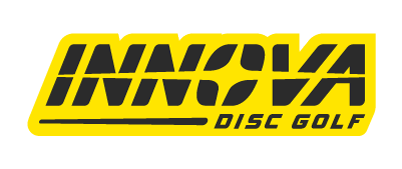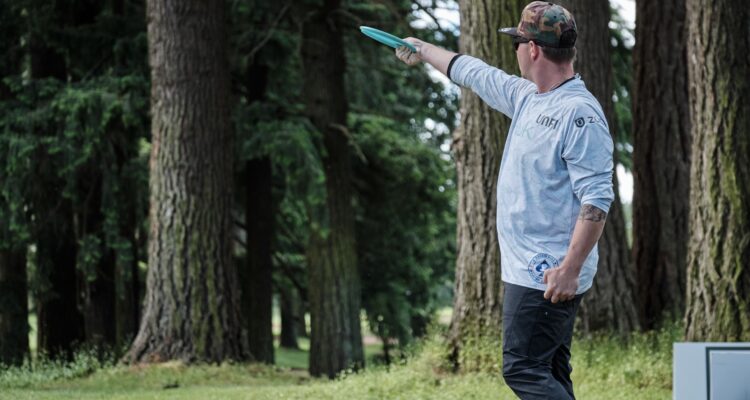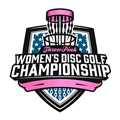Throw Rollers (Intentionally!)
You are closer to throwing great rollers than you realize. If you have solid form for air shots, then you already understand the mechanics needed to throw rollers. If you know the flight characteristics of your discs, you can translate that to how the disc will react on the ground. Check out this guide, pick up an Innova Rollo, and get rolling.
Why Throw Rollers?
There are many circumstances on the course where roller is the best play. Getting under low ceilings, turning sharp corners, maxing out your distance, and scrambling are all made easier with rollers.
Backhand roller can be a great option as a right-finishing shot for players who don’t want to throw forehands. Even for players with excellent forehands, backhand rollers can travel farther right and turn sharper corners in some situations.
In dense woods, a forehand roller might be the only option if you get off the fairway. Since they are thrown vertically, rollers can squeeze through gaps smaller than the width of a disc.
View this post on Instagram
Disc Selection and Angles
Just like with air shots, you need different stability and speed discs depending on the shape of roller you want to throw. Discs roll similarly to the way they fly. Understable discs want to finish to the right when thrown backhand by a right-handed player. Neutral discs go relatively straight and overstable discs will want to cut to the left. Faster discs tend to go farther when thrown with the same amount of speed compared to a slower disc.
The angle the disc hits the ground will also determine the shape of your roller. The more cut angle you put on the disc (meaning the more acute the angle between the ground and the disc) the more the disc will go to the left for right-hand backhands. Less stable discs can hit the ground with cut angle and still finish to the right at the end of the shot. More overstable discs are likely to continue going to the left when thrown with cut angle. Play around with different stabilities of discs at different angles to unlock endless options for shaping rollers.
How to Throw Rollers
First and foremost, don’t abandon the throwing mechanics you already have. Rollers and air shots use the same form, just with a different angle and direction of release. Like with air shots, don’t throw with max power when rolling on the course. Focus on accuracy and timing.
Anhyzer Rollers
Anhyzer rollers (or power rollers) are thrown with stable discs on a severe anhyzer angle. To execute this shot, hinge back at the hips as you throw. Pull the disc high across your body and follow through downward. You will want to get the disc to the ground quickly so it does not have time to start hyzering before it starts rolling. This type of roller offers maximum distance and can travel in a relatively straight line when thrown correctly.
Flip Rollers
Flip rollers are thrown with less stable discs. The disc does more of the work, released flat or on hyzer, before naturally turning into a roller mid-flight. Seasoned Roadrunners and Sidewinders make ideal flip roller discs. Pick an aim point in the sky like you would with an air shot. Calculate the angle of release out of your hand so the disc hits the ground with the correct amount of cut for your shot.
With practice in the field, you can dial in the release angle to make your flip rollers more predictable. In the same way you’ve learned to flip discs from hyper to flat, you can learn to flip discs from flat to roller.
Flip rollers can go much farther in the air before hitting the ground than power rollers. Sometimes a shot will travel 350+ feet in the air on a sky anhyzer before turning roller. Those combo air shot/rollers open up even more shot shaping possibilities.
Forehand Rollers
Most forehand rollers are thrown with an overstable disc that hits the ground close to vertical. (Flip forehand rollers are very much an option, but not mastered by many.) The grip and stance are the same as your forehand. Follow through with your palm facing the ground.
Forehand roller is one of the most useful scramble tools in the game. They can squeeze through gaps too narrow for air shots. For players with big forehand distance, the forehand roller is an effective tee shot as well.
Reading the Ground
Rollers behave differently on different surfaces. Low-cut grass or dirt without rocks and roots is ideal for big distance rollers. If the grass is taller or wet, rollers will slow down more quickly and travel less far. In the woods with uneven ground, throw forehand roller scramble shots when needed, but avoid rollers for distance.
Sloped fairways will impact how your disc rolls. You can translate how the disc would fly with a given slope to how it will roll. Discs rolled uphill will get less distance and act more overstable. Discs rolled downhill will gain speed and therefore be more likely to turn.
Let ‘Em Roll
There was a time when disc golfers thought the forehand was a utility shot you could get away without knowing. The roller is the next shot that every player will need to adopt if they want to compete at the top level.
View this post on Instagram







